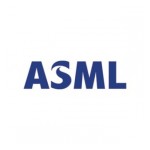ASML
Introduction
ASML brings together the most creative minds in science and technology to develop lithography machines that are key to producing faster, cheaper, more energy-efficient microchips. We design, develop, integrate, market and service these advanced machines, which enable our customers to reduce the size and increase the functionality of their microchips, which in turn leads to smaller, more powerful consumer electronics. We can only do so by using the real strength of ASML, the employee. We are proud of who we are, of our achievements, how we accomplish these achievements. Our staff includes some of the most creative thinkers in the world today; 44% of them possess a master’s degree, 33% a bachelor’s degree, including some 600 PhD’s.
Job Mission
The Recovery Sequence Engineer is, together with his team members, responsible for all the tasks related to maintaining and developing the ARE/GEAR system models. This involves verifying and validating any changes made to the database, communicating with and supporting the editor base and the functional clusters, updating and publishing new versions of the database, assisting with the developing and testing of new tooling, and helping with the training and coaching of new ARE/GEAR users and editors.
The main tasks of a Recovery Sequence Engineer are:
- Management of the ARE/GEAR system models:
- Analyze, assist with the implementation, and verify the changes to the models committed by the editor base.
- Discuss and control the model changes with the applicable stakeholders to ensure the quality of the edits in the CCB meeting.
- Release and publish the new versions of the model to accommodate the new changes made by editors.
- Support related:
- Answer comments/complaints from users about current errors/potential improvements to the system model.
- Take part in discussions and assist other functional clusters throughout the process of implementing major upgrade packages.
- Training and coaching new editors and users.
- Tooling related:
- Support and test the development of new software tooling.
- Participate in discussions about new tooling/changes in the system model.

